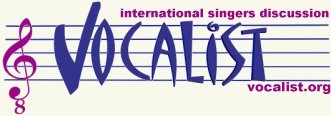trevor asked:
<<
Hey,
do any theory buffs want to take a crack at any of
these questions??????
1. Differentiate form and genre in music
form relates to structure and genre to style. schubert and the beatles
used similar forms in writing their songs yet, they could hardly be
considered the same genre unless you consider structure to be the essence of
communication. one could say that the underlying genteel nature of song
form created more similarity between the beatles and schubert seperating both
from beethoven and his more tormented personality demonstrated in his use of
the more dialectic form of sonata-allegro (god! i'm so full of crap!).
2. Why is historical perspective essential to
studying musical form?
it is important in knowing what material it was a composer sought to
structure. in the classical period composers were organizing material with
regard to tonal area, the melodic material being a mere detail. whereas,
the romantic period composers, with more emphasis on the programatical nature
of music, though still concerned with tonal areas, placed more importance on
melodic themes than had the composers of the classical period.
3."Form in music is a shaping force, a lineal
offspring nourished by invention." Explain and
illustrate.
pass
4.Liszt and Wagner extended the function of motives
from thematic varition to dramatic narrative. Explain
and illustrate.
wagner made great use of the leitmotif, identifying characters with
melodic fragments allowing for the possibility of musical dialogue as the
charcters interact. when siegfried meets the dragon there is siegfrieds
music with the giants motif from way back in rheingold (sorry if that's too
vague- i'm just auditing).
5.Percy Goetchius methodized the structural grammer of
18th and 19th century music. Explain and illustrate.
never heard of the dude. i would guess it was related to my answer to
#2
6.Explain the following derivations in the evolution
of musical form
codas from cadential extensions
i think toward the end of the classical period, composers started
converting cadential extensions into codas as a brief restatement of the
development section (in sonata-allegro form). as the practice continued,
they became almost a second development section. by the nineteenth century,
codas took on a life of their own.
i'll pass on all the other questions.
**************I can explain most of these. I just
can't come up with any examples to go with them. Any
suggestions or explanations would be greatly
appreciated!!!!
Thanks,
Trevor- the frustrated form student
trevor,
i have to warn you that some or, all of my answers might be total
bull@#&*. i can't even tell myself.
mike
ps. that was fun. thanks.
|
|  |

